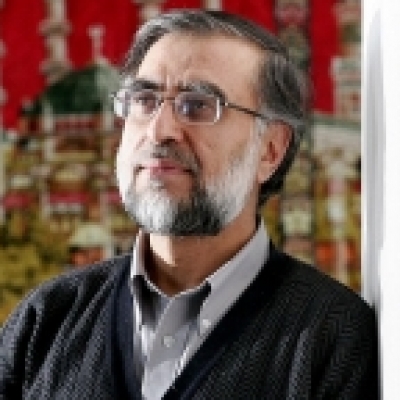



 Zafar Bangash
Zafar BangashHow the House of Saud came to occupy the Arabian Peninsula makes fascinating reading. It is both a story of intrigue and great gall. That the House of Saud should occupy the entire Arabian Peninsula and then rename it, in complete violation of the Prophet’s sunnah, to Saudi Arabia, shows their brazenness.
The Prophet, upon whom be peace, had named this blessed land the Arabian Peninsula. He had also made the entire Peninsula sacred territory from which the non-Muslims are expressly excluded. The House of Saud has violated both these commands. The Arabian Peninsula is full of najs people as a result of the policies pursued by the House of Saud.
The Saudi tribe emerged from Dari’yyah in the eighteenth century (1744 Ce). Their first foray outside the town near present-day Riyadh was short-lived. After controlling Najd, the Saudi tribe moved towards the Hijaz in 1802. When the people of Taif, 40 miles from Taif, resisted the Saudi hordes, they slaughtered everyone. The terrified people of Makkah and Medina opened their gates in hopes that they would be spared the fate of Taif.
Without meeting any resistance from the people, the Saudis turned their attention to pillage and sacking the sacred places. Pilgrims were prevented from performing Haij and were robbed of all their possessions. When news of the Saudi massacre in Taif and sacrilege in Makkah and Medina reached the Khalifah in Istanbul, he ordered his governor in Cairo, Muhammad Ali, to deal with the insurgents. After a number of unsuccessful attempts, Muhammad Ali’s son, Ibrahim Pasha defeated the Saudi hordes and drove them back in 1819. Dari’yyah was also razed to the ground as a lesson to the Saudis.
No more was heard of the Saudis until the end of the nineteenth century when the Saudis were driven by the Ibn Rasheeds. The Saudis sought refuge with shaikh Mubarak on the outskirts of Kuwait and sulked. Abdul Aziz ibn Saud was then a 19-year old youth but he had already established his reputation for ruthlessness. His favourite sport was robbing pilgrims’ caravan (the Saudis considered all those who did not share their narrow, literalist interpretations of Islam, as kafirs).
In 1902, two events occurred that were to change the destiny of the Arabian Peninsula in a profound way. One was Abdul Aziz’s attack on the Mismak fortress in Riyadh. Shaikh Ajlan, Ibn Rasheed’s governor, was slain and the fortress occupied by Ibn Saud.
At about the same time, the British consul in Jeddah, one Zohrab, noted the great importance of Makkah and Medina from which non-Muslims were excluded. He sent a memo to Britain pointing out that Muslims met at the time of Hajj and could discuss issues of which the British government would have no knowledge. He felt that this could threaten British interests because great plots could be hatched!
Zohrab suggested that Britain should have direct access to Makkah and Medina. If that were not possible, to have a trusted Muslim agent installed there. This led directly to British intrigue with the sharif Husain who was the wali (governor) of Makkah appointed by the Khalifah in Istanbul. British money and guns started to cultivate the sharif to incite him for a revolt against the Uthmaniyyah Khilafah. Sharif Husain was promised leadership over all the Arabs.
While the British were making these promises to sharif Husain, they were also promising Palestine to the Jews. British designs were not lost on the Turks who alluded to this in their paper The Hijaz (No 1896; 25 Safar 1433 [1914]).The paper correctly questioned the British intent to occupy the holy places.
British duplicity soon became apparent with the Balfour declaration of November 1917 promising a homeland to the Jews in Palestine. The British also had both Sharif Husain and Ibn Saud on their payroll. It is interesting to note that the Saudis considered Muslims who did not share their narrow interpretations as kafir yet they were quite happy to serve as agents of the British.
Abdul Aziz not only managed to defeat Sharif Husain, driving him out of the Hijaz but also fought off his Ikhwan allies who had supported him in his struggle against the sharif. British guns, money and planes were all used to facilitate his rise to power and pre-eminence in the Arabian Peninsula
In 1932, Abdul Aziz ibn Saud also occupied the Hijaz and declared that he would seek the advice of the Ummah about its proper administration. Yet without waiting for any advice, he proceeded to incorporate it into the kingdom of Saudi Arabia. He also changed the name of the Arabian Peninsula.
The plan envisioned by the British consul in 1902 was realized in a short span of 30 years. Since then, the House of Saud has become obedient servants of Uncle Sam.
Muslimedia - April 1996-August 1996
